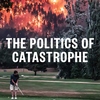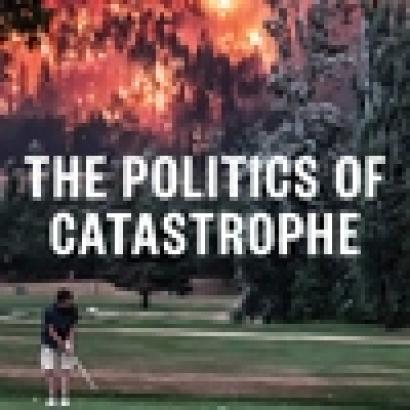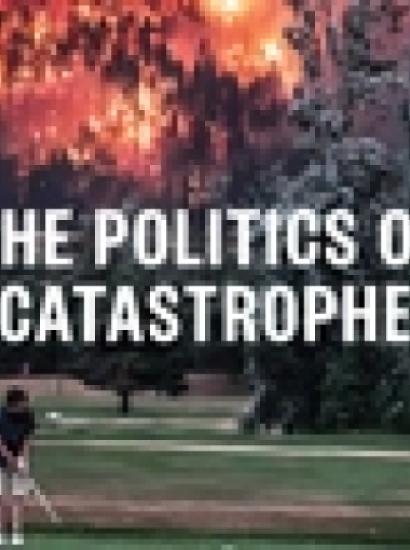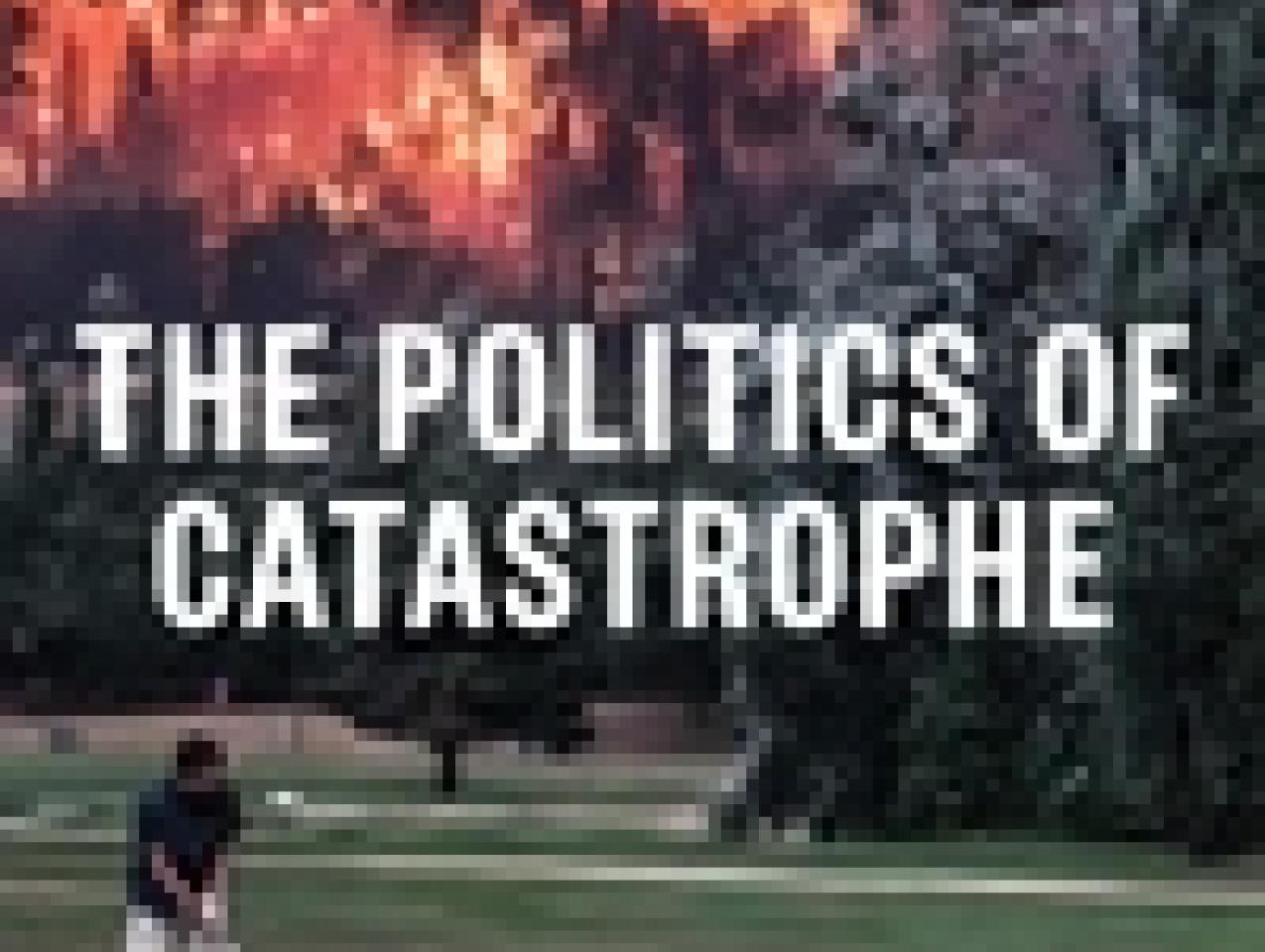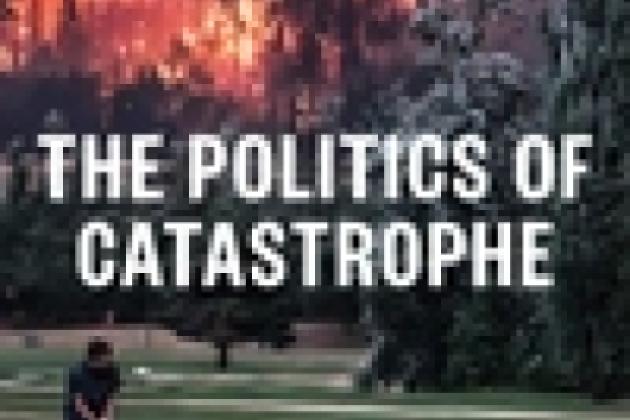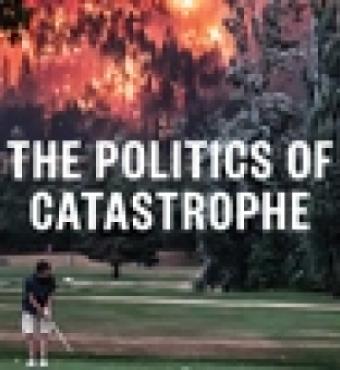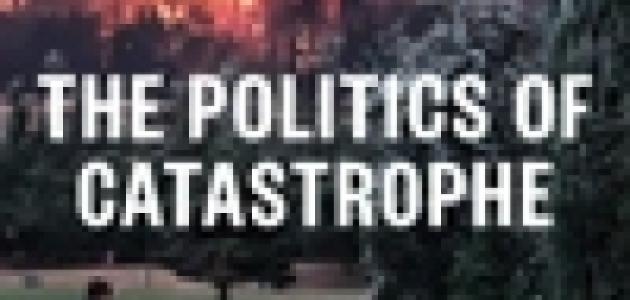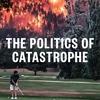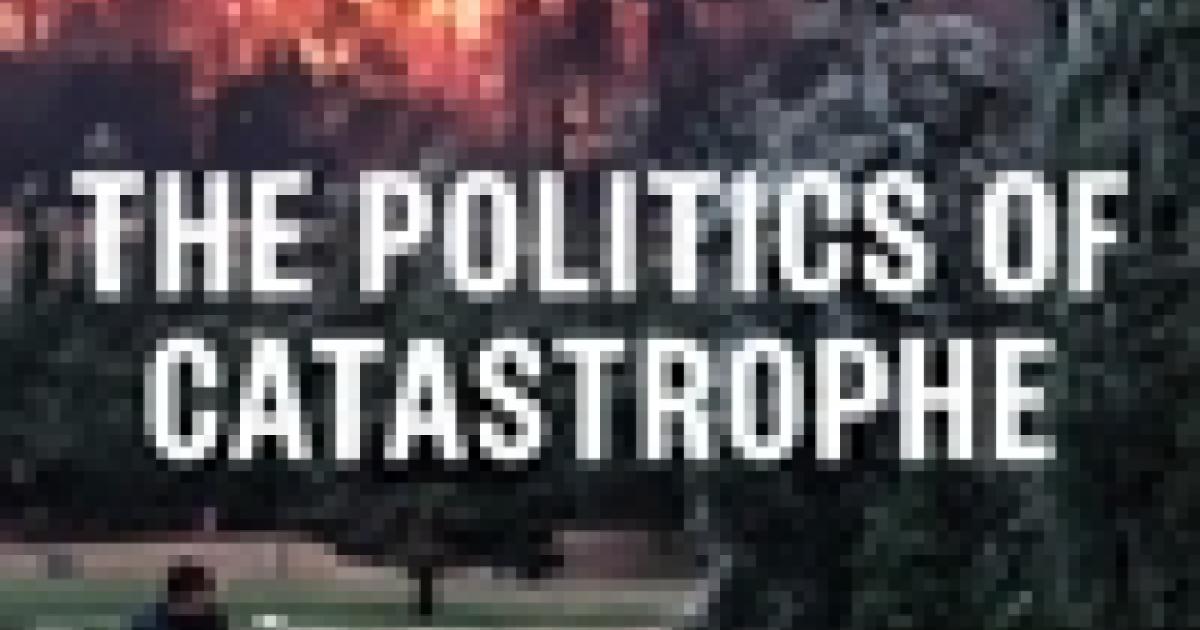By Jonathan Movroydis
In this interview, Milbank Senior Fellow Niall Ferguson discusses his newly released best seller, Doom: The Politics of Catastrophe (Penguin Press, 2021). He addresses central themes of the book, including why all major disasters of history are at least somewhat political in nature. In this respect, he zooms in on the COVID-19 pandemic and explains why some governments, such as those in Taiwan, South Korea, and Israel, effectively mitigated “excess mortality” caused by the initial wave of the virus while others failed. Ferguson also compares the public health responses and implications of the COVID-19 pandemic of 2020–21 with those of the recent past resulting from the H1N1 virus (“Spanish Flu”) of 1918–19 and the H2N2 strain (“Asian Flu”) of 1957–58.
Doom is a book focused primarily on disasters and how societies respond to them. Is this subject matter new territory for you?
My interest in history is always that interface between the economic and the geopolitical. I have never wanted to be writing about just one of those topics. With that said, disasters are the great punctuation marks in history. It struck me even before COVID-19 that we didn’t have a good framework for thinking about disaster. Indeed, if we had any framework, it was a bad one that drew a false distinction between manmade and natural disasters.
The idea of writing a general history of disaster and emphasizing its political character was inspired by my reading of the economist Amartya Sen, who made the point long ago that famines are not natural disasters; they are manmade. Doom tries to take that idea and generalize it to all disasters. In addition to famines, I wanted to be able to talk about wars, pandemics, and other consequential events. I didn’t think anybody had really done this before.
In Doom, you begin by discussing how societies have perceived and struggled with the reality of death. In terms of COVID-19, why do you think some societies responded with measures based on the belief of fighting COVID-19 at all costs, including by imposing strict lockdowns to prevent the rise in fatalities that would otherwise be caused by the contagion, while other societies advocated the importance of reopening their economies?
I think the right way to understand this is not “lockdowners versus reopeners,” which is often how it’s presented in the public debate. The right way to think about it is the people who took early action versus the people who played for time. The countries that took early action like Taiwan and South Korea, and also New Zealand and Australia, were able to prevent large-scale spread. These measures also mitigated economic disruption. The countries that played for time, like the United States and most in Europe, ended up having to impose much stricter measures from mid-March 2020 onward because they missed the opportunity to prevent spread. That’s the real distinction. Once that opportunity was missed, some restrictions on movement became a necessary measure. Even the parts of the United States that didn’t lock down, in fact, saw significant declines in mobility, because ordinary people just adapted their behavior.
The difference between success and failure in preventing the spread of COVID-19 depended on timing. The explanation for that timing difference is that certainly South Korea and Taiwan had understood the implications of the outbreaks of SARS in 2003 and MERS in 2012. The implications were that if there was a future coronavirus that was really contagious, then the public health authorities needed to take early action with testing, contact tracing, and isolation of individuals suspected of having the virus. These Asian countries understood that, and we hadn’t. I don’t mean “we” in terms of presidents and prime ministers. I mean “we” in terms of public health officials on both sides of the Atlantic. We were really well prepared for another influenza pandemic, but a coronavirus pandemic we had not properly thought through.
You write that South Korea, Taiwan, and even Israel were well prepared for COVID-19 because, in part, they are used to facing existential threats from military adversaries. How does their preparation for kinetic threats translate into an effective public health response?
I think that‘s crucial. The fact that those three countries have every reason to be paranoid because their neighbors pose an existential threat explains the swiftness of their response. Those countries are just quick on the draw because they have to be. When I was in Taiwan in early January 2020, it was having an election, and everybody was worried about a cyber or information attack from mainland China. It wasn’t unreasonable for Taiwan to fear a biological threat.
We, by contrast, don‘t have the sense of multiple existential threats, and that means that we have a much more bureaucratic response to risk. The culture has been getting worse for decades. We task some agency, or maybe multiple agencies, with preparing for eventualities and the bureaucrats then produce a 36-page contingency plan. We then say, “We’ve ticked the box.” Nobody’s really testing these plans in a systematic way, if at all. The bureaucracy has covered its ass because it has a 36-page plan, but everybody who thinks about this seriously knows that that’s not real preparedness. I think there were people who knew that. In the book, I quote the assistant secretary for preparedness and response at Health and Human Services as basically saying, “If we really have a pandemic, we’ll be SOL.” That was just after they published the pandemic preparedness plan.
If you‘re slightly overconfident about your security, then you will never really be prepared. On paper, the US was the best-prepared country for a national public health emergency—for a pandemic. The United Kingdom was the second best. It is much better to be generally paranoid, like the Taiwanese, and quick on the draw than to have these elaborate plans that disintegrate on contact with the real crisis.
Of course, the countries that did well at repressing the spread of the virus last year then proceeded to do badly at vaccination this year. And vice versa. So no one got this completely right.
In Doom, you place focus on a statistic called “excess mortality.” Why do you think it’s the best measurement for the scale of disaster, and what can it help us learn in preparing for future threats?
People die. There’s no getting away from that. Part of the problem in the case of COVID-19 is that across the world there was a lot of variation in how deaths were recorded. Deaths were being attributed to COVID-19 even if people tested positive for the virus while dying of something else. That meant that there wasn’t real consistency in national statistics. The best way of capturing the seriousness of the crisis is to ask, “How much higher is mortality in this month or this year than we would consider normal?” That means you don’t have to worry about whether a death was indeed attributable to COVID-19 or whether the person would have died anyway because he already had cancer or heart disease.
Excess mortality also captures people who died indirectly because of the pandemic, including those who were discouraged from going to see their doctor and became fatally ill. In a normal year, they probably wouldn’t have died. In addition, the measure captures the sort of unintended benefits of lockdowns. There were fewer automobile accidents during the strictest controls, for example.
Although we have been focused to the point of obsession on COVID-19, it still was not the number-one cause of American deaths in 2020. It was number three, after heart disease and cancer. It caused only around 13 percent of deaths among the elderly last year. So, let’s remember: people die. We all at some point die, and there would have been a lot of deaths in the US anyway. I like the excess mortality measure because in the future we will get a clean read on what is really abnormal about 2020 and 2021.
One of the central points you make in Doom is that all disasters are somewhat manmade. Will you tell readers what you mean by that?
I think this is really important, because we have this intuitive distinction in our minds between a pandemic caused by a virus or some other pathogen and a war caused by people. As Amartya Sen wrote of famines, however, while crops do often fail, for millions of people to die human agency has to be involved somehow, whether in the realm of economics or politics. The worst famines of the twentieth century were really manmade. Joseph Stalin, for example, made sure that there was no meaningful relief to Ukraine in the early 1930s, and Mao Zedong’s Great Leap Forward was a crazy attempt at rapid industrialization that almost doomed rural China to starvation. That’s the first part of the answer.
When you take a step back and ask, “Why did the same virus in 2020 kill a dozen people in Taiwan and half a million in the US?” the answer cannot be biological. It just has to be that we dealt with the pandemic much less well. That’s the second part of the answer.
The third part of the answer is that even the most seemingly natural disasters like volcanoes or earthquakes are only disastrous if you decided to build a city next to the volcano or on the fault line. You could ask, “How did the Romans know this when they built Pompeii next to Mount Vesuvius?” That’s fine. But when you keep rebuilding Naples right next to that very same volcano, you are ensuring that the next time there’s a big eruption, a whole bunch of people will die. The subtitle of the book, The Politics of Catastrophe, is really the argument. Catastrophes are nearly always politically mediated. The only exception would be if Earth was hit by an asteroid of the size that killed the dinosaurs, but it’s been a very long time since that happened. That would be a truly exogenous disaster. The same would be true if solar activity suddenly drastically changed in ways that affected life on Earth. But that’s just not the kind of disaster the human race has been dealing with in recorded history. The disasters of the last four thousand years, whether we call them natural or manmade, have ultimately caused excess mortality, according to our ability or inability to cope with them.
The paradox of the book is that over four thousand years of recorded history, we’ve became much more scientifically knowledgeable, yet we don’t seem to be that much better at anticipating and coping with crises.
Why are we so bad at this?
Well, the argument of the book is that while scientific knowledge has increased, so has our vulnerability, because we cannot resist building complex networks that are very good at spreading a new pathogen like COVID-19. That, I think is part of the answer.
But there’s another part of the answer, which is that we love bureaucracy. We think we can cope with complex challenges through regulation and bureaucratic oversight. This is somewhat illusory, because much of the regulation and oversight that we have implemented actually complicates our response to disasters, as well as making us more vulnerable to threats from adversaries. Our policies often make us less safe and more fragile. That is why the modern world is less capable at disaster management than it should be.
The Spanish flu of 1918–19 was far deadlier than COVID-19. However, economies were far less interconnected. Did networks still play a role in the spread of that earlier contagion?
Almost the same role, but just a bit slower. The odd thing is that, considering how much faster a jumbo jet is than a transatlantic ship, the spread of the H1N1 virus in 1918–19 was almost as fast as the spread of SARS-CoV-2 in 2020. Part of the story is that people were moving around a lot because of World War I. A very large number of young Americans were being herded together, first in camps and then sent across to Europe to fight in the war. That definitely created new social networks, which were favorable pathways for a new influenza virus. In that respect, the story was the same one hundred years ago as it is today.
Even with a network that’s connected by steamships, you can still spread a virus incredibly quickly throughout the whole world. I was struck by the fact that changes in transportation have actually less of an impact on the speed of a pandemic than one would expect. It’s because once the virus has transcended borders, whether it’s across the Atlantic in a boat or across the Pacific in a plane, it doesn’t need that much technological help in spreading beyond that point. It’s actually doing most of the spreading on buses and trains and through restaurants and busy places. Long-distance travel is not the key conduit. As long as the virus gets to New York, it will get to Vermont and Montana within a fairly predictable number of weeks, whether it’s 1918 or 2020.
You explain that our experience with COVID-19 most closely resembles that of the 1957–58 H2N2 pandemic, known as the “Asian flu.” What was the US government response in that era?
It’s a very interesting comparison, because globally the H2N2 pandemic was pretty similar to COVID-19 in the sense of the proportion of the world’s population that it killed. The 2020 pandemic is going to come in worse than 1957–58, but certainly nowhere near as bad as 1918–19. That means that 1957–58 is our best point of comparison. If there are differences, it was because young people were dying in significant numbers. The excess mortality was actually higher among teenagers than among the elderly.
The 1957–58 virus also killed a lot of very young children. By contrast, COVID-19 disproportionately killed the elderly, that is, people close to the end of life. And yet, when you look back at 1957–58, people’s response was very different. There was no lockdown, there were no school closures. Life went on.
The administration of Dwight Eisenhower knew that there would be excess mortality. The goal was just to minimize economic disruption and expedite the vaccine development and delivery, which they did in a matter of months. As a result, you won’t find any real trace of 1957 in the economic data. There was a mild recession that year. It had nothing to do with the pandemic.
Now you could argue, “Well, it was an influenza virus. They knew what they were doing. They had experience.” That’s true. It was a smaller challenge. Still, it’s really impressive how quickly those vaccines were shot into people’s arms in the same year that it all began. There is one other thing I learned subsequent to writing the book. Americans had a lot more hospital capacity in 1957–58, and that may be why they were able to just “keep calm and carry on.” Nobody was worried about the hospitals being overwhelmed.
Since then, we have significantly reduced our hospital beds per capita. The consequences of this is that during COVID-19, governments took drastic action for fear of literally running out of beds or intensive care units. The last thing I would say is that sixty years ago, the American economy didn’t offer the option of remote work. In that respect, 2020–21 is a totally different world than that of 1957–58.
You write that critics in the media have placed excessive blame on national leaders such as Donald Trump and Indian prime minister Narendra Modi for the spread of the virus in their respective countries. Does national leadership matter in crises such as this?
Part of the argument of the book is that presidents and prime ministers matter a lot less than you think in a crisis like this. The critical points of failure, if things go wrong, is actually further down the chain of command, such as public health authorities. It was their poor decisions that initially led to excess mortality during COVID-19—the failure to test, contact trace, isolate the vulnerable, and quarantine potentially infected people. All of these failures really weren’t to do with the decisions taken at the top. However, I do think that national leadership in a crisis still matters. And mistakes that leaders like Donald Trump made surely added some percentage to excess mortality, but it was just a smaller percentage than most of Trump’s critics realize. It’s hard to compute what that percentage would be.
How many people were directly at risk because of unreliable things Trump would say about hydroxychloroquine or the attitude he took to mask wearing and other health and safety protocols? It’s really impossible to say. I think the big mistake of much of the media coverage last year, and it persists today, is to think that the point of failure was the president and that electing a new president sort of fixes everything. That’s a delusion. I think if Joe Biden had been president a year earlier, we would have had pretty much the same excess mortality, because the CDC would have done no better at testing and we wouldn’t really have gotten very far with contact tracing.
In 2019, Biden’s chief of staff Ron Klain said, “Well, if swine flu had been a really bad virus in 2009, then we would have had a natural disaster.” They were lucky. Obviously, when he said that, COVID-19 hadn’t yet happened, but in truth, if it had happened to the Obama administration, instead of swine flu, I don’t think the outcome would have been that different from the outcome we had in 2020.
Given America’s culture and systems of government, and the way our economy works, how do you think we can prepare for future disasters?
I think we can learn a lot from Taiwan. Why are we constantly copying the People’s Republic of China when the Republic of China (Taiwan) seems to be coming up with solutions that are far more compatible with democracy and the rule of law? We also need to learn from ourselves. We didn’t use to be so bureaucratic. Something’s gone wrong in our government, not only at the federal level but also at the state and local levels.
We must recognize that there is a pathology in our bureaucracy that is making us less good at crisis management. We need to remind ourselves that the federal government in the 1950s, when everybody in it had served in some capacity in World War II, was just a much nimbler and more impressive organization. When we talk about infrastructure, we all know that lots of money is going to be spent but it won’t likely produce a fruitful outcome. In recent times, we haven’t accomplished anything like the construction of the interstate highways, which was conceived by legislation advanced by President Eisenhower in 1956.
It’s not like we just discovered this in 2020; think of all the disasters since September 11, 2001. How well did we really deal with those? I think the answer is pretty badly by Eisenhower standards, which is not a bad standard to measure the federal government against.
I think the reason the Eisenhower administration performed with such efficiency during the 1957–58 pandemic was because its leadership had planned the D-Day landings. They really were very good at doing difficult things fast, and I think we’ve lost that today.”







